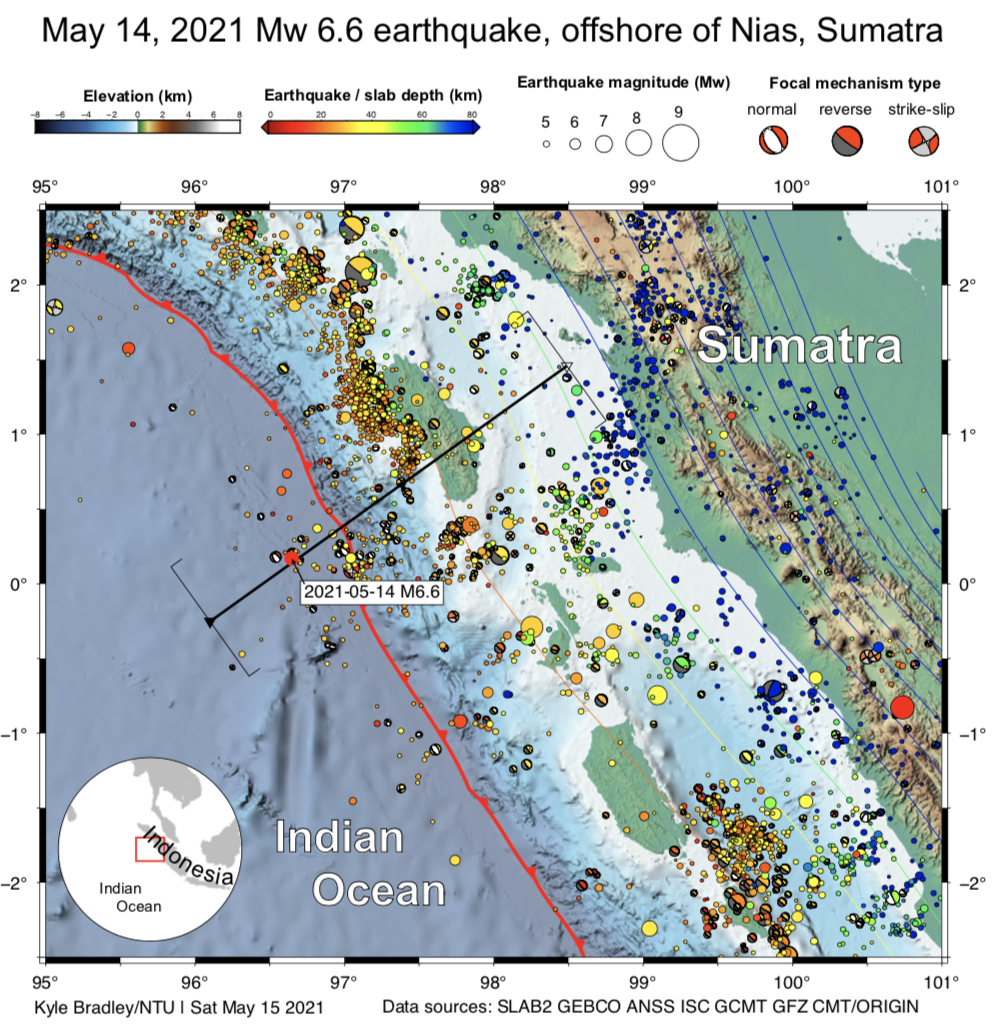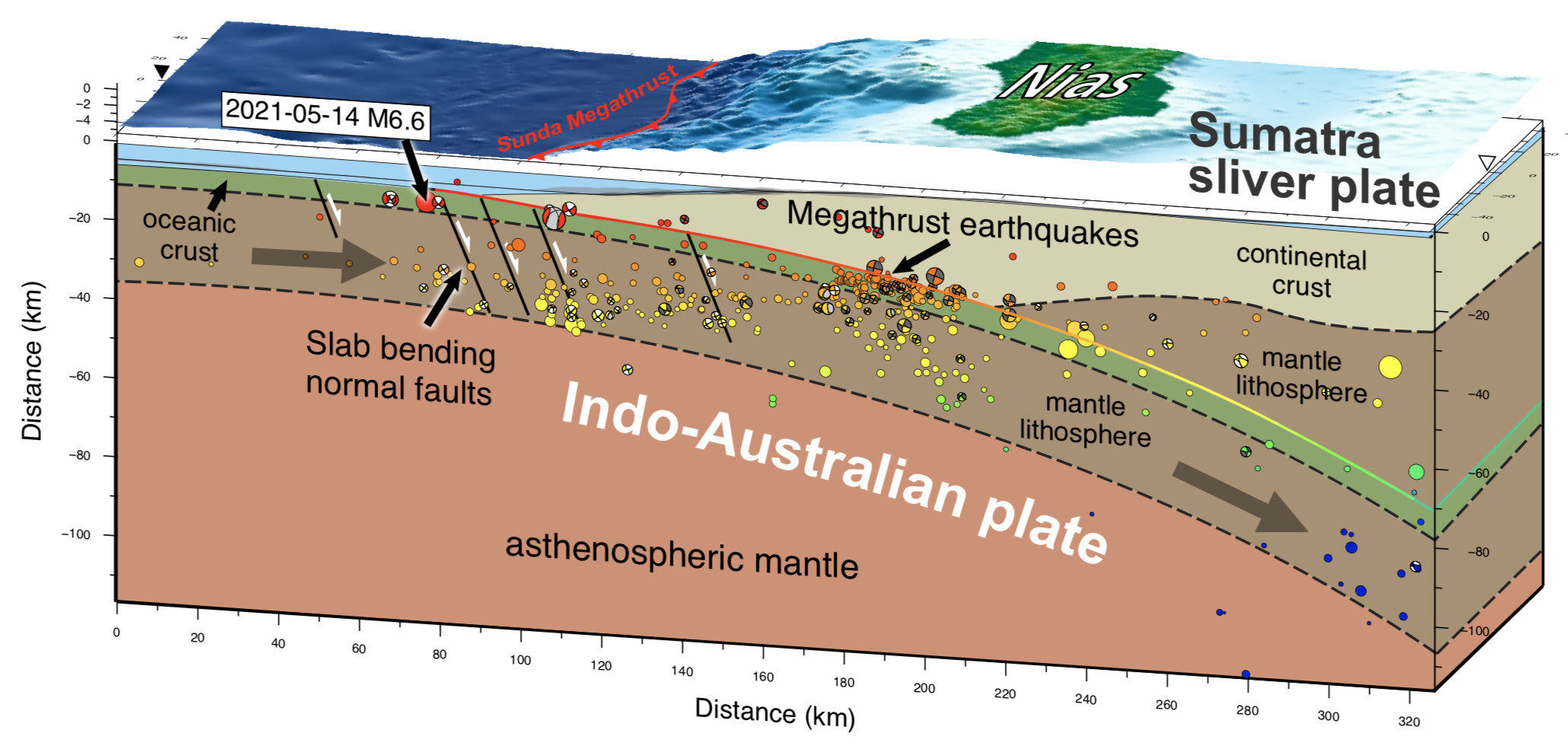A strong earthquake struck the Nias region off the west coast of Sumatra, Indonesia, on 14 May 2021 at approximately 1:33pm (Singapore time). According to the United States Geological Survey (USGS), the magnitude-6.6 earthquake occurred at a depth of about 10 kilometres.

Based on information provided by the USGS, yesterday’s earthquake occurred within the Indo-Australian plate, where it bends before subducting under the Eurasian plate. As the plate bends, it can break and generate what is known as an outer-rise earthquake.
Yesterday’s earthquake is not a megathrust event as it did not occur at the boundary between the two tectonic plates, unlike the 2004 Great Sumatran earthquake. "It demonstrates how subduction zones are not just simple plate boundaries but involve internal deformation of both of the plates with complex seismicity," said Assistant Professor Judith Hubbard, a Principal Investigator at the Earth Observatory of Singapore (EOS) who studies earthquakes all around Southeast Asia.

On 19 April 2021, a similar outer-rise event occurred within a few kilometres from yesterday’s event. These events are indeed quite common for the region. And because they are shallow, they can trigger tsunamis.
"A Mw 8.2 outer-rise earthquake that occurred near Sumba in 1977 produced a devastating tsunami that rose to six metres in Sumba and Sumbawa," said Dr. Kyle Bradley, a Principal Investigator at EOS who studies the fault systems in Southeast Asia. "These kinds of earthquakes do represent a significant hazard if an unusually large one strikes," he added.
"It is especially important to be prepared for potential earthquakes and tsunamis after an earthquake, since the earthquake can affect nearby faults and lead to further events," said Asst. Prof Hubbard.